It’s (almost) the weekend. You finally have some time away from your job. You’re ready to hop in the car with your camera gear, ready to drive a few hours at night listening to weird music and get good and dusty. You’re ready for night photography.
But it’s cloudy.
Should you pack it in and fire up Netflix? Maybe not.
Clouds can add immense drama and interest to your photo, and can sometimes make a night photo better. They can frame your subject or add interest to the night sky or glow from the moon or even light pollution.
Moon or not, clouds can look magnificent. They can add a beautiful mysterious glow to the stars. Just as with day photography, they can add interest, so it is with night photography as well.
For long exposures, it’s usually best when they are moving a bit and not completely covering the sky, although even then, it’s possible to get some good photos. Let’s look at a few photos.
Adding a glow to the Milky Way
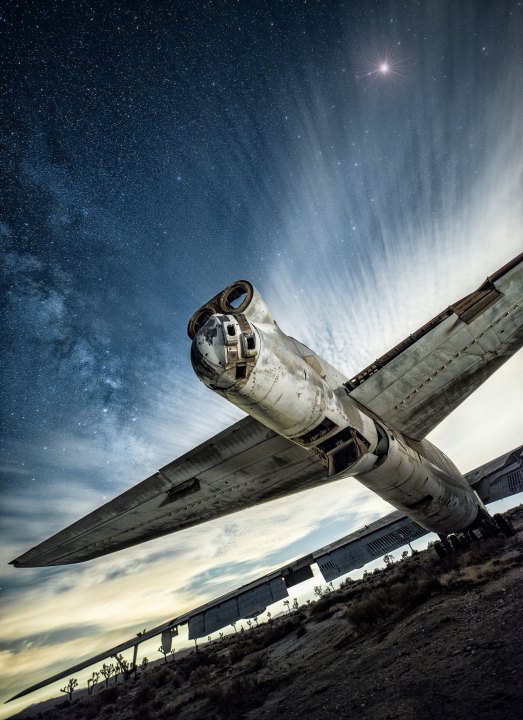
The photo above has quite a few clouds. I checked my app, Clear Outside, and it stated that the sky could be as much as 100% total cloud cover. The app does describe whether the clouds are high clouds, medium clouds or low clouds as well as giving total cloud cover, so you can tell the character of the clouds, which is rather useful.
Additionally, the app gives other information, such as when the International Space Station is visible, visibility, fog, rain and wind.
On this particular night, I saw that there was some wind and that there were between 80-100% high clouds. This sounded grim. And it was a long drive to this location. But we had received permission, so we persevered. We were rewarded with beautiful dramatic skies that glowed profusely from light pollution, streaked wispily across the sky, yet revealed the glorious Milky Way overhead.
In this photo, I quietly observed which way the wind was blowing so I could pre-visualize how the clouds would look. I knew that they were sort of coming toward the camera and would dramatically bracket the airplane in the foreground. And here, because these clouds are higher, wispier clouds and because they are moving from the wind, they don’t completely occlude the stars but add a gorgeous, diffuse glow.
Adding mood and eeriness
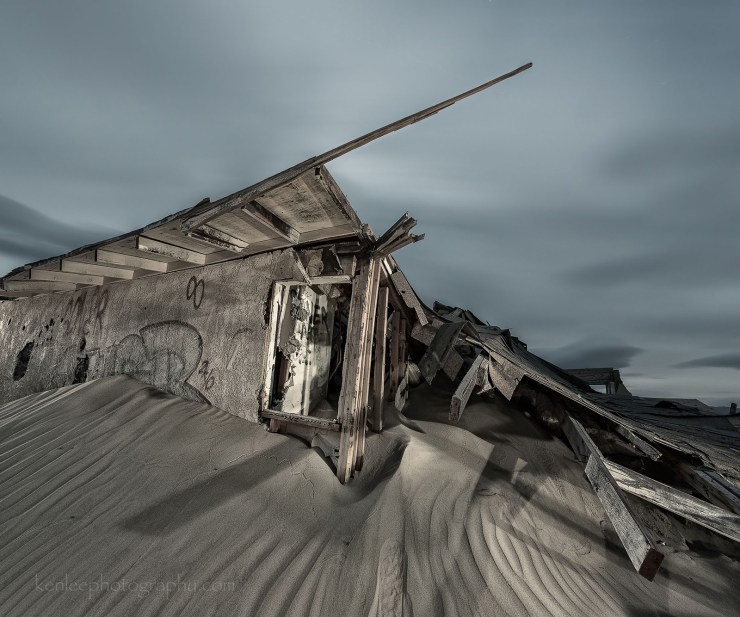
The next photo, shown above, is absurdly cloudy. It was initially somewhat clear, but as the sun melted into the horizon, more and more clouds appeared until finally, almost the entire sky was covered.
Initially disappointed, I began to realize that the clouds might add a certain eeriness to some of the photos of houses buried in the sand. Here’s a photo in which I actually desaturated the photo slightly to go with the cloudy feel and exaggerate the already eerie feel.
Bracket your landscape
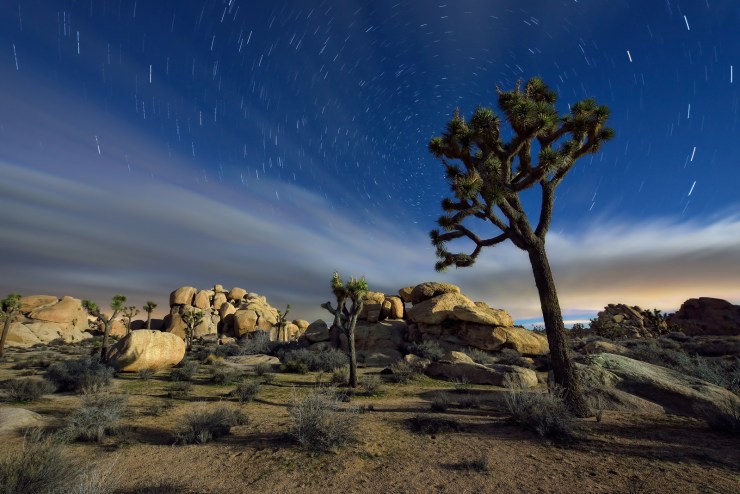
Partially cloudy skies work as well, even when the clouds are low, as with this photo above, taken in Joshua Tree National Park in the Mojave Desert. The blurring of the moving clouds adds drama and movement to the composition, and brackets the rocky foreground, adding to the already surreal landscape.
Although this would be more romantic if we knew the glow was from a setting sun, the reality is that this is light pollution from Coachella Valley.
Adding drama and movement
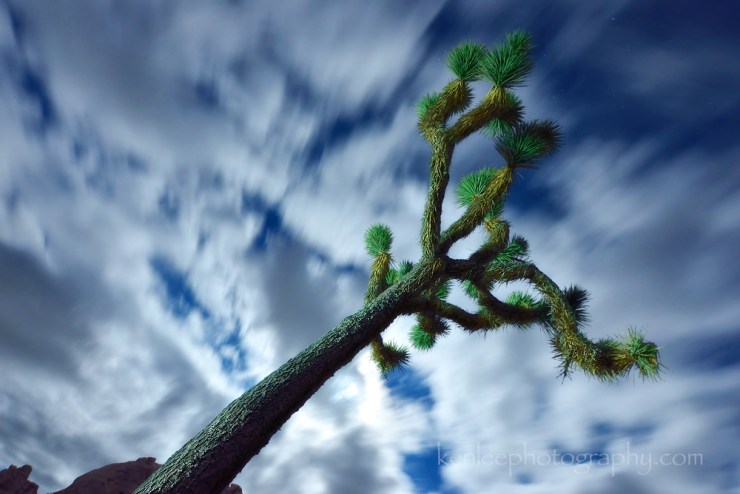
The above photo, also taken in Joshua Tree National Park, shows quickly moving low clouds, and again, the long exposure adds a sense of drama and movement. Here, an almost full moon backlights the Joshua Tree and adds a beautiful glow to the clouds.
Epic weather
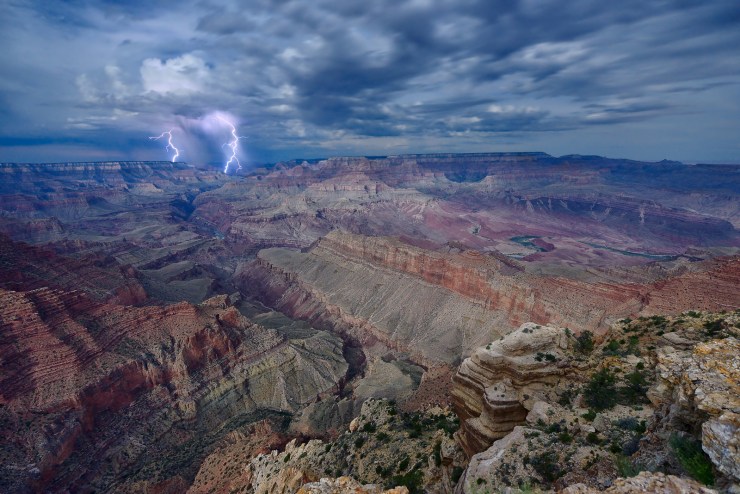
This last example of night photography with clouds is admittedly more obvious since it’s accompanied by the additional drama of a lightning storm. This is of course the Grand Canyon in Arizona.
I was doubly lucky because to the back of me was a full moon that was beautifully illuminating the canyon below, with the Colorado River snaking through the rocky terrain. Here, the clouds are also in movement, coming almost right toward the camera and adding, once again, drama and movement to the photo.
When you see clouds before going out to photograph, remember that this doesn’t mean you are automatically hosed. Sure, maybe it may block your Milky Way. But maybe it won’t. And maybe, it will add drama to the night sky that you never even imagined possible. I hope this was helpful or inspiring. Please share if you like it, and please leave a comment below.
Tell your story with the second annual Visual Storytelling Conference!
Experience four days of interactive, online training sessions featuring a range of educational content with experienced photographers and content creators. This free event kicks off with a series of technical boot camps to build essential skills, followed by live, online sessions on photography, video, business and social media. Join live from March 10-13, 2022!
